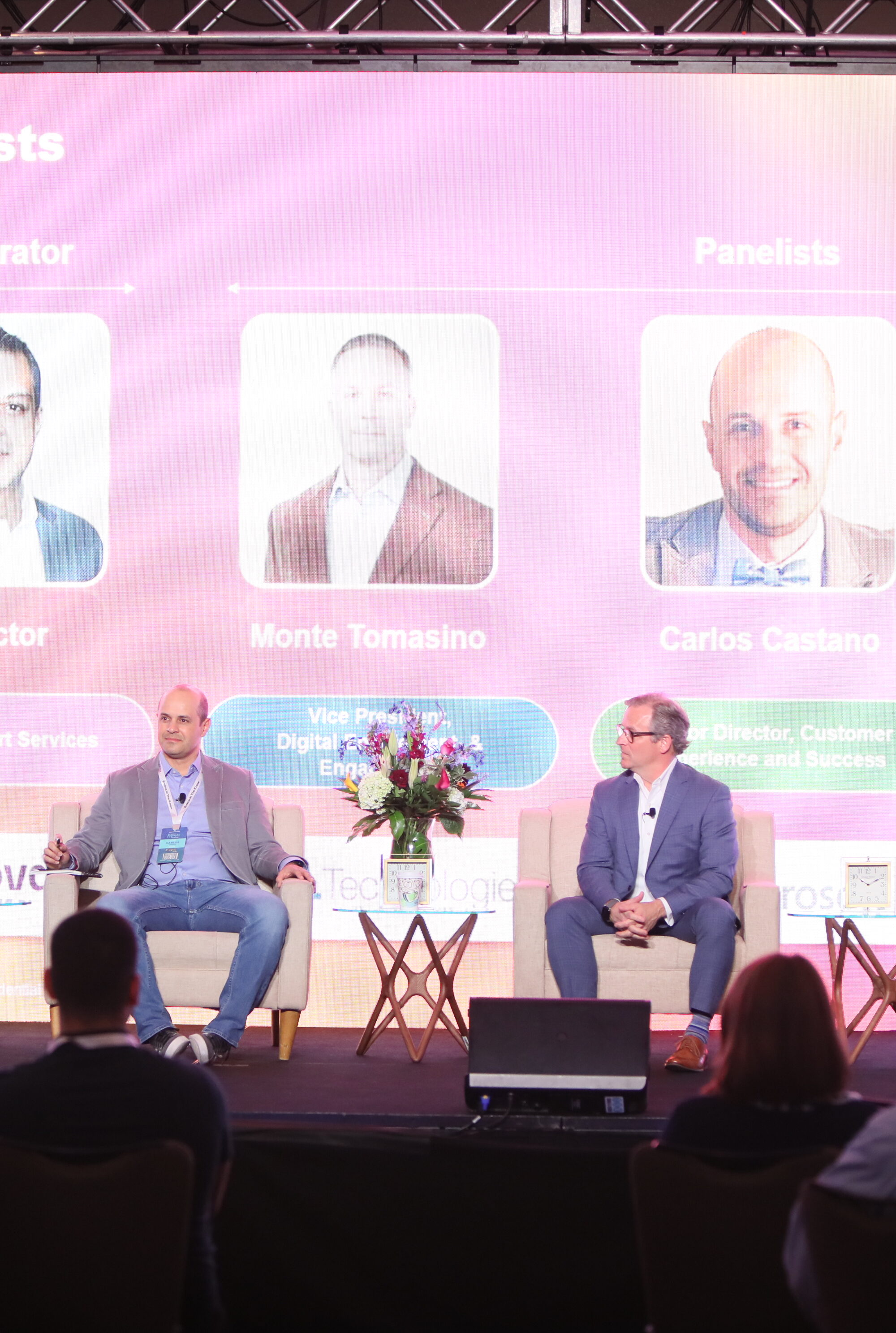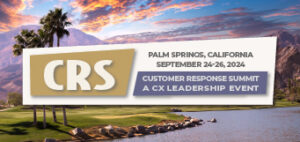Customers now demand personalized and targeted digital experiences that cater to their specific needs and preferences.
In the competitive digital market, companies that satisfy and surpass customer expectations have a higher chance of succeeding, whereas those that fail to do so are at risk of losing their customers and market share.
The end-to-end (E2E) customer journey, starting from the first encounter to the purchase, follow-up assistance, and continuous engagement, is now table stakes and plays a crucial role in establishing trust, loyalty, and advocacy.

We heard from three CX leaders in Austin, TX, during Customer Response Summit (CRS): Bit Rambusch, Vice President, Professional Services and Delivery at Phillips; Monte Tomasino, Vice President, Digital Enablement & Engagement at Dell Technologies, and Carlos Castano, Senior Director, Customer Experience and Success at Microsoft, each of whom shared their own unique journeys as it relates to delighting customers across the digital experience.
Alongside panel moderator Sid Victor, Head of Support Services at Movate, they spoke about navigating the process, what worked (and what didn’t), and how brands can deliver personalization across multiple, sometimes intersecting, customer personas, bringing employees along on the transformation journey, and driving collaboration across the organization to converse on a common architecture.
How Does Personalization Work Hand in Hand with Driving Efficiency?
Personalization matters more than ever, and the value of getting it right cannot be overstated. These days, consumers don’t just want personalization, they demand it.
“It’s important we don’t forget with personalization that the development side of things don’t interfere with the delivery side,” Tomasino said. “As an organization, you have to rationalize around a common architecture and those personalization capabilities.”
Personalization drives performance and better outcomes. It is especially effective at driving repeat engagement and loyalty over time.
Businesses that excel in personalization have a unique approach. Instead of perceiving personalization as a mere marketing or analytics issue, they regard it as an opportunity that spans across the entire organization. Moreover, these companies do not solely concentrate on immediate benefits; they search for long-term growth drivers and prioritize customer lifetime value.

“Simplifying around a common architecture is unbelievably important. With a common architecture, you’ll create conflicts within those channels,” explained Rambusch. “We get so siloed as to how to approach common ways of working together and governing to drive efficiencies. How are you thinking about the customer lifecycle journey as it relates to managing the lifetime value of that customer?”
As consumers continue to demand more from customer support organizations, brands can focus myopically across the customer experience to decrease friction.
“A well-designed efficiency with the customer in mind will translate into a great customer experience,” added Castano. “As leaders, we are always under pressure to cut costs. When you simplify processes and workflow, you simplify your delivery experience. It may be difficult to get to a common architecture. If you’re a brand that has been in the business for 30 plus years, you’re going to have a lot of legacy systems.”
What Role Does Employee Experience (EX) Play in Personalization Strategies?
The experience of employees plays a crucial role in the success of a company’s customer personalization strategies. When employees are engaged, motivated, and feel valued, they are more likely to deliver personalized experiences that exceed customer expectations.
“You have to be deliberate about the culture you create across your organization. You must model behavior and bring employees along on the transformation journey. Make curriculum and certification available to high-aptitude employees,” Tomasino said. “From a partner perspective, if you want them to be partners, you have to treat them that way. How can you strike a balance between what your employees or partners are trying to achieve versus what your brand is trying to achieve?”

Victor added that brands should take the feedback, analyze it, and then implement what their employees are saying. You should:
- Know your customers and employees
- Understand their needs
- Personalize service offerings on the front end and tie that into the support they get on the back end.
“To make the employee experience of support professionals as easy as possible to satisfy customers,” said Castano. “How do you remove the barriers so customers never have to call in?”
Before the panel discussion wrapped up, there was an audience Q&A where Alice Sesay Pope from Amazon shared what the brand is doing to delight across the digital experience.
“At Amazon, there’s one thing that’s very clear to everyone and it’s that
customer interaction is a defect. Every year, we’re deliberate about eliminating customer contact. When you think about customer effort, how many steps are there? We are constantly challenging ourselves from the customer’s perspective. How do we proactively detect the customer has a problem before the customer even knows it?”
Next stop for Customer Response Summit (CRS) – Nashville, Tennessee. Registration is now open!
Located downtown, a short walk from Nashville’s nightlife, The Grand Hyatt Nashville will host our event with its classic Southern hospitality. This artistic community where everyone has a voice will be the perfect setting for our sharing community of customer experience (CX) leaders.
Once again, our CX leadership community will be put in the spotlight, bringing extraordinary ideas and insights to the stage. There will be no shortage of meaningful leadership networking opportunities, relevant CX topics, or fun and upscale shared moments.
We hope to see you September 20-23, 2023, at CRS Nashville!


